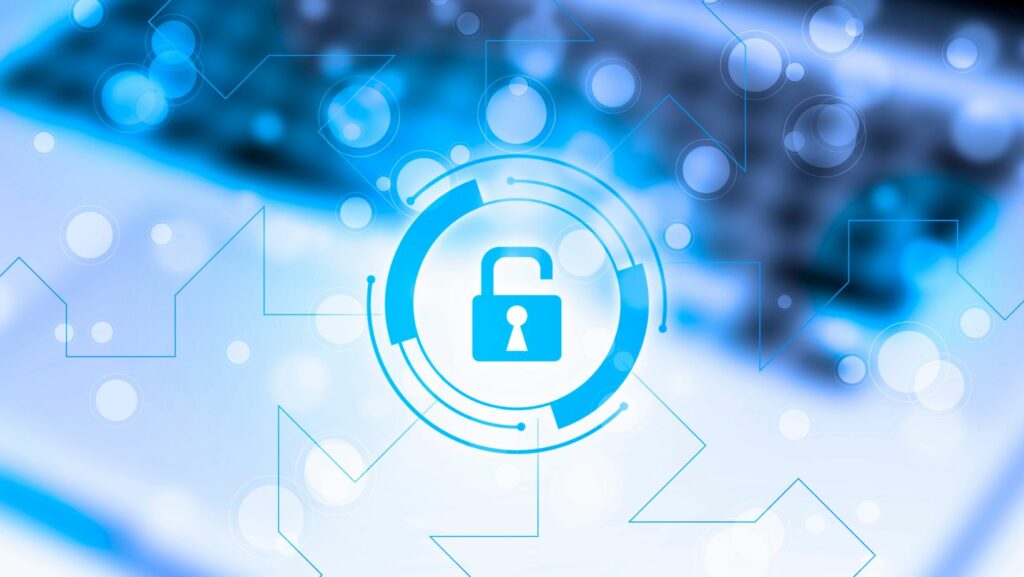Key Takeaways
- Increased Awareness: Cybersecurity GIFs play a crucial role in raising awareness about digital safety threats and best practices, making complex information more accessible.
- Engaging Format: Animated visuals capture attention quickly and enhance retention, helping users remember important cybersecurity messages.
- Simplified Communication: GIFs break down intricate cybersecurity concepts, such as phishing and two-factor authentication, into easily digestible content.
- Versatile Educational Tool: Various types of GIFs—covering topics like password security and malware awareness—offer targeted education on essential cybersecurity measures.
- DIY GIF Creation: Individuals can create their own effective cybersecurity GIFs using user-friendly tools and design strategies, enhancing personalized communication.
- Visual Impact: High-quality visuals, concise text, and effective animation techniques are key to creating impactful GIFs that convey critical security information clearly.
In a digital world where threats lurk around every corner, cybersecurity has become more crucial than ever. Organizations and individuals alike face constant risks from cyber attacks, making it essential to stay informed and vigilant. As the landscape evolves, so does the way we communicate about these threats. Enter the cybersecurity GIF—a dynamic and engaging way to convey complex information quickly.
These animated visuals simplify intricate concepts, making them accessible to a broader audience. Whether it’s illustrating the importance of strong passwords or showcasing the latest security protocols, cybersecurity GIFs pack a powerful punch. In this article, readers will explore the significance of these animations in raising awareness and promoting cybersecurity best practices, ultimately helping to foster a safer online environment for everyone.
Cybersecurity Gif
Cybersecurity GIFs serve as vital tools in conveying essential information about digital safety. They simplify complex concepts and demonstrate important practices, enabling viewers to absorb crucial knowledge quickly. These animated visuals effectively capture attention, making them suitable for educational and promotional purposes.
Cybersecurity GIFs can cover various topics, including:
- Phishing Attacks: GIFs illustrate how phishing attempts occur, showcasing red flags and preventative measures.
- Password Security: Animated examples show strong versus weak passwords, emphasizing the importance of creating secure credentials.
- Two-Factor Authentication (2FA): GIFs explain the 2FA process, highlighting steps for enhanced account security.
- Data Breaches: These visuals detail how data breaches happen, providing insights into the consequences and mitigation strategies.
Utilizing cybersecurity GIFs fosters engagement, making information more digestible and impactful. As organizations seek to enhance their cybersecurity culture, these animations play a significant role in creating awareness and promoting safe practices online.
Importance of Visual Content in Cybersecurity
 Visual content significantly enhances communication in cybersecurity, offering a dynamic way to convey essential information. Cybersecurity GIFs stand out as powerful tools, engaging audiences while delivering critical knowledge effectively.
Visual content significantly enhances communication in cybersecurity, offering a dynamic way to convey essential information. Cybersecurity GIFs stand out as powerful tools, engaging audiences while delivering critical knowledge effectively.
GIFs capture attention quickly, creating instant interest. By using animations, security messages become more relatable and memorable. A well-designed GIF can evoke emotions and drive home important alerts about cyber threats, making viewers more likely to retain information. This engagement increases the likelihood of users sharing the content, further spreading awareness about cybersecurity practices.
Simplifying Complex Concepts
GIFs break down intricate ideas into easily digestible visuals. Instead of lengthy textual explanations, animated graphics highlight key points. For example, a GIF illustrating how phishing attacks operate can clarify the process in seconds. This simplicity aids in comprehension, enabling individuals to grasp the significance of cybersecurity measures without feeling overwhelmed. By simplifying these complex concepts, GIFs empower users to act on critical information efficiently.
Popular Cybersecurity Gifs
Cybersecurity GIFs effectively communicate essential concepts, making information on digital safety easy to understand. Various types of GIFs cater to different aspects of cybersecurity, highlighting the importance of safety online.
Types of Gifs in Cybersecurity
- Phishing Awareness GIFs: These GIFs illustrate common phishing tactics. They help users recognize misleading emails and suspicious links.
- Password Security GIFs: These animations emphasize the creation of strong passwords. They demonstrate techniques like using special characters and avoiding common phrases.
- Two-Factor Authentication GIFs: These visuals explain the 2FA process. They show a step-by-step guide on enabling additional security measures for accounts.
- Data Breach GIFs: These examples illustrate the consequences of data breaches. They outline steps organizations can take to minimize risks and recover from incidents.
- Malware Awareness GIFs: These animations demonstrate how malware spreads. They provide insight into the importance of regular software updates and safe browsing practices.
| GIF Title | Description | Topic |
|---|---|---|
| “Phishing Hook” | A visual depicting an email phishing attack. | Phishing Awareness |
| “Strong Passwords” | An animation illustrating password creation tips. | Password Security |
| “Secure Your Login” | A step-by-step GIF showing 2FA activation. | Two-Factor Authentication |
| “Data Breach Impact” | A visual representation of a data breach crisis. | Data Breach Awareness |
| “Beware of Malware” | An animation explaining malware types. | Malware Awareness |
These GIFs capture attention and distill complex information into engaging animations, ensuring viewers remember vital tips for maintaining cybersecurity.
Creating Your Own Cybersecurity Gifs
Creating cybersecurity GIFs involves utilizing various tools and design strategies to communicate essential concepts effectively. These animated visuals enhance understanding of digital safety topics and encourage engagement.
Tools and Resources
 GIF Creation Software: Tools like Giphy, Adobe Photoshop, and Canva enable users to create and edit GIFs easily. Each provides features for animation, text overlay, and image manipulation.
GIF Creation Software: Tools like Giphy, Adobe Photoshop, and Canva enable users to create and edit GIFs easily. Each provides features for animation, text overlay, and image manipulation.- Stock Media Libraries: Websites such as Unsplash and Pexels offer free images and videos that can serve as raw materials for GIF creation. These resources provide high-quality visuals for enhancing animated content.
- Animation Applications: Programs like After Effects and Blender allow users to create more complex animations for their GIFs. They provide advanced features for customizing motion and visual effects.
- Online Tutorials: Platforms like YouTube and Skillshare feature tutorials focused on GIF creation. These resources offer step-by-step guidance on using various tools effectively.
- Keep It Simple: Focus on conveying a single message or concept clearly. Avoid cluttering animations with unnecessary details.
- Use High-Quality Visuals: Incorporate clear, high-resolution images. Poor-quality visuals can detract from the overall impact of the message.
- Incorporate Text Wisely: Use concise text that complements visual elements. Ensure the font is legible and contrasts well with the background.
- Animate Effectively: Utilize appropriate speeds for transitions. Smooth animations enhance comprehension, while abrupt movements can confuse viewers.
- Color Consistency: Employ a cohesive color palette that aligns with cybersecurity themes. Colors should evoke trust and security while maintaining visual appeal.
By utilizing the right tools and adhering to these design practices, individuals can create impactful cybersecurity GIFs that effectively communicate key safety concepts.
Enhancing Digital Safety
Cybersecurity GIFs are more than just engaging visuals; they’re essential tools for enhancing digital safety awareness. By simplifying complex concepts and presenting critical information in an easily digestible format, these animations help individuals and organizations recognize potential threats and adopt best practices.
As the digital landscape continues to evolve, the role of visual content in cybersecurity will only grow. Creating and sharing effective GIFs can empower users to take proactive steps in protecting their online presence. Embracing this innovative approach not only fosters a stronger cybersecurity culture but also contributes to a safer online environment for everyone.

